How did basketball evolve
Here's the history of basketball—from peach baskets in Springfield to global phenomenon
James Naismith, a Canadian American physical educator and innovator, invented the game of basketball in Springfield, Massachusetts in 1891 to keep his students active during the winter. The game was an immediate success and the original American sport spread instantly to other colleges and YMCAs. Naismith is pictured here with his wife Maude Evelyn Sherman Naismith.
Photograph via Agefotostock / Alamy Stock Photo
Please be respectful of copyright. Unauthorized use is prohibited.
The nets used by athletes to dunk the ball and score points in the beloved game of basketball evolved from peaches, or rather the baskets used to collect peaches.
That’s what a young athletic director ultimately used on a cold day back in 1891 for a new game he created to keep his students engaged.
James Naismith was a 31-year old graduate student teaching physical education at the International YMCA Training School, now known as Springfield College, in Springfield, Massachusetts when students were forced to stay indoors for days due to a New England storm.![]() The usual winter athletic activities were marching, calisthenics, and apparatus work but they weren’t nearly as thrilling as football or lacrosse which were played during the warmer seasons.
The usual winter athletic activities were marching, calisthenics, and apparatus work but they weren’t nearly as thrilling as football or lacrosse which were played during the warmer seasons.
James Naismith, the creator of basketball, stands with the 1899 University of Kansas basketball team.
Photography via Florida Historical 1A / Alamy Stock Photo
Please be respectful of copyright. Unauthorized use is prohibited.
Naismith wanted to create a game that would be simple to understand but complex enough to be interesting. The game had to be playable indoors, and it had to accommodate several players at once. The game also needed to provide plenty of exercise for the students, yet without the physicality of football, soccer, or rugby since those would threaten more severe injuries if played in a confined space. (See 100 years of football in pictures.)
Naismith approached the school janitor, hoping he could find two square boxes to use for goals.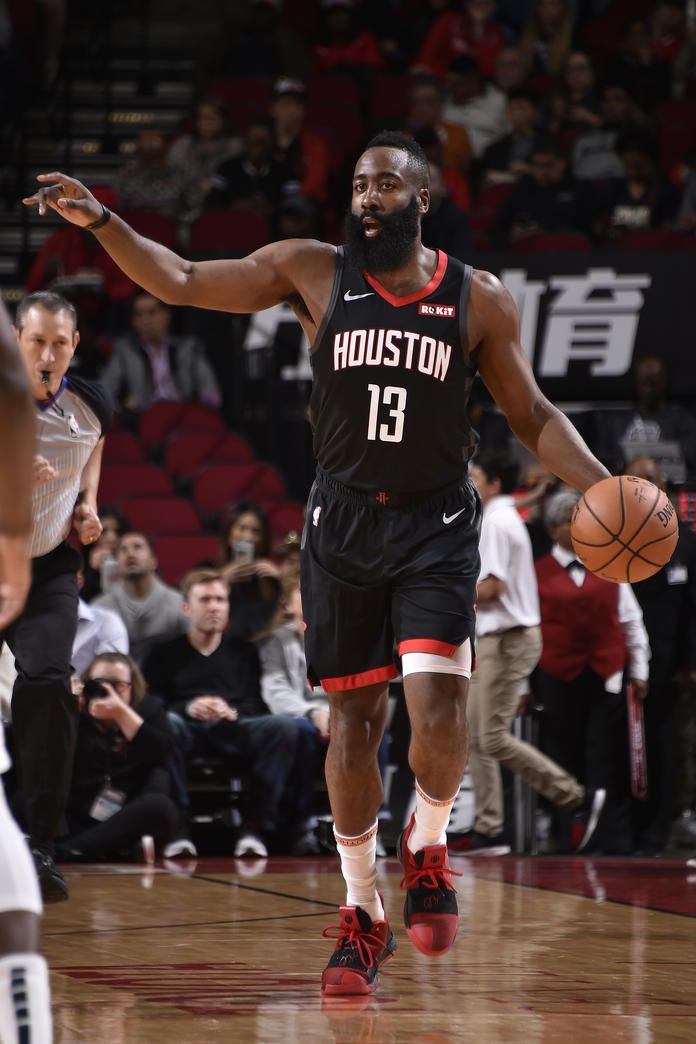 When the janitor came back from his search, he had two peach baskets instead. Naismith nailed the peach baskets to the lower rail of the gymnasium balcony, one on each side. The height of that lower balcony rail happened to be 10 feet. The students would play on teams to try to get the ball into their team’s basket. A person was stationed at each end of the balcony to retrieve the ball from the basket and put it back into play.
When the janitor came back from his search, he had two peach baskets instead. Naismith nailed the peach baskets to the lower rail of the gymnasium balcony, one on each side. The height of that lower balcony rail happened to be 10 feet. The students would play on teams to try to get the ball into their team’s basket. A person was stationed at each end of the balcony to retrieve the ball from the basket and put it back into play.
The first game ever played between students was a complete brawl.
Two boys stand on the first basketball court in the gymnasium of the School for Christian Workers, Springfield, Massachusetts, 1900s.
Photograph via. Hulton Archive/Getty Images
Please be respectful of copyright. Unauthorized use is prohibited.
“The boys began tackling, kicking and punching in the crunches, they ended up in a free for all in the middle of the gym floor before I could pull them apart,” Naismith said during a January 1939 radio program on WOR in New York City called We the People, his only known recording. “One boy was knocked out. Several of them had black eyes and one had a dislocated shoulder.” Naismith said. “After that first match, I was afraid they'd kill each other, but they kept nagging me to let them play again so I made up some more rules.”
“One boy was knocked out. Several of them had black eyes and one had a dislocated shoulder.” Naismith said. “After that first match, I was afraid they'd kill each other, but they kept nagging me to let them play again so I made up some more rules.”
The humble beginnings of the only professional sport to originate in the United States laid the foundation for today’s multi-billion-dollar business. The current National Collegiate Athletic Association (NCAA) March Madness college basketball tournament includes the best 68 of more than 1,000 college teams, stadiums that seat tens of thousands of spectators and lucrative television contracts.
Details of the original 1891 copy of the rules of "Basket Ball" are presented at Sotheby's auction house December 3, 2010 in New York City. The two-page document sold for $4.3 million.
Photograph by Chris Hondros, Getty Images
Please be respectful of copyright. Unauthorized use is prohibited.
Original rules of the game
Naismith didn’t create all of the rules at once, but continued to modify them into what are now known as the original 13 rules.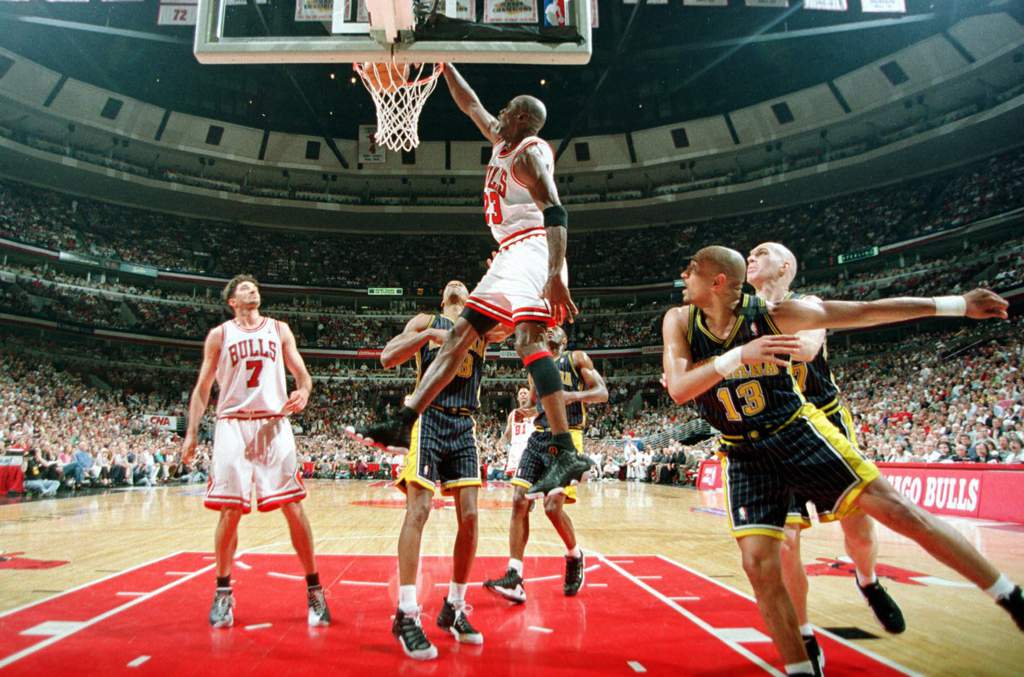 Some are still part of the modern game today. Naismith’s original rules of the game sold at auction in 2010 for $4.3 million.
Some are still part of the modern game today. Naismith’s original rules of the game sold at auction in 2010 for $4.3 million.
In the original rules: The ball could be thrown in any direction with one or both hands, never a fist. A player could not run with the ball but had to throw it from the spot where it was caught. Players were not allowed to push, trip or strike their opponents. The first infringement was considered a foul. A second foul would disqualify a player until the next goal was made. But if there was evidence that a player intended to injure an opponent, the player would be disqualified for the whole game.
Umpires served as judges for the game, made note of fouls and had the power to disqualify players. They decided when the ball was in bounds, to which side it belonged, and managed the time. Umpires decided when a goal had been made and kept track of the goals.
If a team made three consecutive fouls, the opposing team would be allowed a goal.
A goal was made when the ball was thrown or batted from the grounds into the basket and stayed there. If the ball rested on the edges, and the opponent moved the basket, it would count as a goal. When the ball went out of bounds, it was thrown into the field of play by the person first touching it. The person throwing the ball was allowed five seconds; if he held it longer, the ball would go to the opponent. In case of a dispute, an umpire would throw the ball straight into the field. If any side persisted in delaying the game, the umpire would call a foul on that side.
If the ball rested on the edges, and the opponent moved the basket, it would count as a goal. When the ball went out of bounds, it was thrown into the field of play by the person first touching it. The person throwing the ball was allowed five seconds; if he held it longer, the ball would go to the opponent. In case of a dispute, an umpire would throw the ball straight into the field. If any side persisted in delaying the game, the umpire would call a foul on that side.
The length of a game was two 15-minute halves, with five minutes' rest between. The team making the most goals within the allotted time was declared the winner. If a game was tied, it could be continued until another goal was made.
Please be respectful of copyright. Unauthorized use is prohibited.
Please be respectful of copyright. Unauthorized use is prohibited.
Left: University of Kansas women's basketball team members Marcella Morewitz, left, and Grace Endicott get expert coaching from Dr. James Naismith, a member of the university's faculty and inventor of basketball, in 1926.
James Naismith, a member of the university's faculty and inventor of basketball, in 1926.
Photograph by George Rinhart, Corbis/Getty Images
Right: Olivia Nelson-Ododa (#20) of the University of Connecticut Huskies goes up for a basket against Digna Strautmane (#45) of the Syracuse Orange during the second round of the 2021 NCAA Women’s Basketball Tournament at the Alamodome on March 23, 2021 in San Antonio, Texas. UCONN won the game and advanced to the Sweet 16. The Huskies have won more NCAA championships than any other women's basketball team in the nation. They cut down the nets, an honor for the winning team, in 1995, 2000, 2002, 2003, 2004, 2009, 2010, 2013, 2014, 2015, 2016.
Photograph by Carmen Mandato, Getty Images
First public gamesThe first public game of basketball was played in a YMCA gymnasium and was recorded by the Springfield Republican on March 12th, 1892. The instructors played against the students. Around 200 spectators attended to discover this new sport they had never heard of or seen before. In the story published by the Republican, the teachers were credited with “agility” but the student’s “science” is what led them to defeat the teachers 5-1.
The instructors played against the students. Around 200 spectators attended to discover this new sport they had never heard of or seen before. In the story published by the Republican, the teachers were credited with “agility” but the student’s “science” is what led them to defeat the teachers 5-1.
Within weeks the sport’s popularity grew rapidly. Students attending other schools introduced the game at their own YMCAs. The original rules were printed in a college magazine, which was mailed to YMCAs across the country. With the colleges’ well-represented international student body the sport also was introduced to many foreign nations. High schools began to introduce the new game, and by 1905, basketball was officially recognized as a permanent winter sport.
The first intercollegiate basketball game between two schools is disputed, according to the NCAA. In 1893, two school newspaper articles were published chronicling separate recordings of collegiate basketball games facing an opposing college team.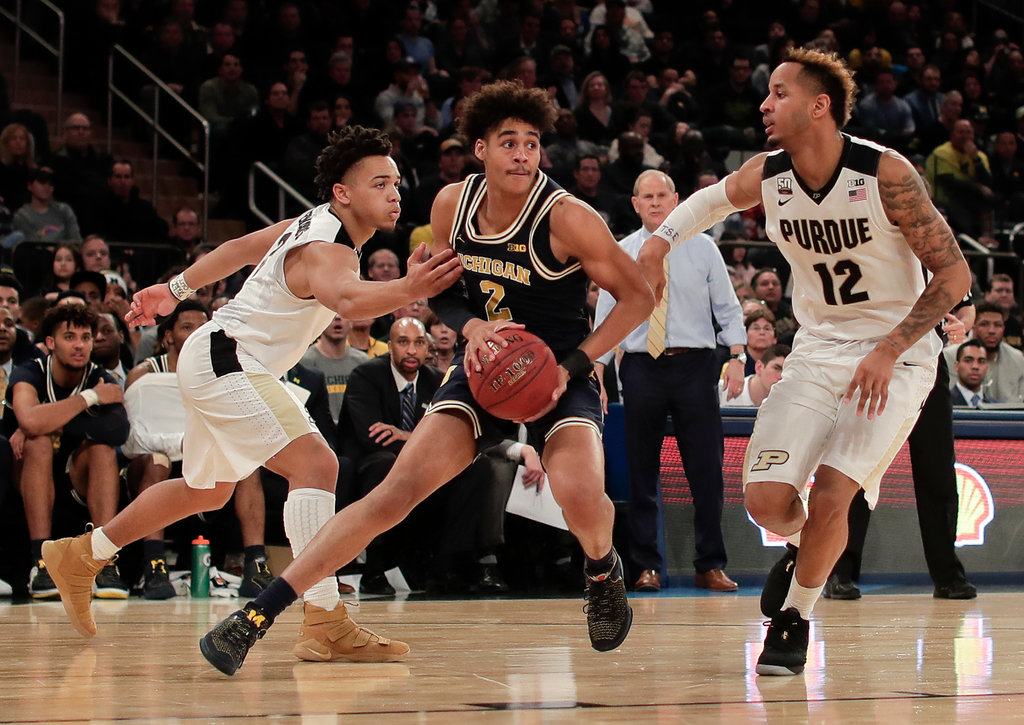
In 1892, less than a year after Naismith created the sport, Smith College gymnastics instructor Senda Berenson, introduced the game to women’s athletics. The first recorded intercollegiate game between women took place between Stanford University and University of California at Berkeley in 1896.
With the sport’s growth in popularity, it gained notice from the International Olympic Committee and was introduced at the 1904 Olympic Games in St. Louis as a demonstration event. It wasn’t until 1936 that basketball was recognized as a medal event. Women’s basketball wasn’t included as an Olympic medal event until the 1976 Montreal games. (Wheelchair basketball in Cambodia changed these women's lives.)
Jim Baechtold (10) of the New York Knickerbockers and Bob Brannum (18) of the Boston Celtics try to get a rebound in the first quarter of a March 16, 1954 NBA playoff game at the Boston Garden. Others in the picture are Celtics Chuck Cooper (11) center, and Bob Cousy (14) left.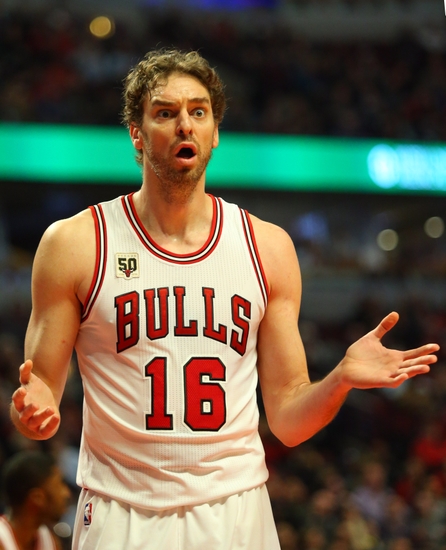 In 1950, Cooper was the first Black basketball player drafted by an NBA team.
In 1950, Cooper was the first Black basketball player drafted by an NBA team.
Please be respectful of copyright. Unauthorized use is prohibited.
As the sport continued its rapid spread, professional leagues began to form across the United States. Basketball fans cheered on their new hometown teams. The first professional league was the National Basketball League (NBL) formed in 1898, comprised of six teams in the northeast. The league only lasted about five years. After it dissolved in 1904, the league would be reintroduced 33 years later in 1937 with an entirely new support system, with Goodyear, Firestone, and General Electric corporations as the league owners, and 13 teams.
While professional sports leagues gained nationwide attention, college basketball was also a major fixture. The first NCAA tournament, which included eight teams, was held in 1939 at Northwestern University. The first collegiate basketball national champion was the University of Oregon. The team defeated Ohio State University.
Please be respectful of copyright. Unauthorized use is prohibited.
Please be respectful of copyright. Unauthorized use is prohibited.
Left: Villagers watch a basketball game at Yangping Village in Yuncheng, Shanxi Province, China on July 12, 2020.
Photograph by Shi Yunping, VCG / Getty Images
Right: Oklahoma City Thunder player Steven Adams (12) rebounds in a game against the Portland Trail Blazers at Chesapeake Energy Arena in Oklahoma City, Oklahoma, on April 21, 2019.
Photograph by Greg Nelson, Sports Illustrated / Getty Images
Like most of the United States in the early to mid 1900s, basketball was segregated. The sport wouldn’t be integrated until 1950 when Chuck Cooper was drafted by the Boston Celtics. Prior to Cooper being drafted there were groups of black teams across the country, commonly known as “the black fives”, which referred to the five starting players on a basketball team. All-black teams were often referred to as colored quints or Negro cagers. The teams flourished in New York City, Washington, D.C., Pittsburgh, Philadelphia, Chicago, and in other cities with substantial African American populations. They were amateur, semi-professional, and professional.
All-black teams were often referred to as colored quints or Negro cagers. The teams flourished in New York City, Washington, D.C., Pittsburgh, Philadelphia, Chicago, and in other cities with substantial African American populations. They were amateur, semi-professional, and professional.
Of the more than 1,000 collegiate basketball teams across all divisions of the NCAA, 68 teams play in the annual March Madness tournament. The best college teams from each conference around the country compete for a place in the Sweet 16, Elite Eight, Final Four and, ultimately, the national championship. Though basketball might not be played the same way as it was when Naismith invented it—peach baskets have been replaced with nets, metal hoops and plexiglass blackboards—its evolution proves that the game has transcended a century.
Read This Next
How animals hybrids happen, from ligers to zorses
How animals hybrids happen, from ligers to zorses
Interbreeding between animals of different lineages is widespread in nature—and may reveal some of the mysteries of evolution.
Is Algeria the next great travel destination in Africa?
Is Algeria the next great travel destination in Africa?
Ancient fortified towns, Roman ruins, and Sahara sands make Africa’s largest country an undiscovered tourism giant hiding in plain sight.
Is building more dams the way to save rivers?
Is building more dams the way to save rivers?
As rivers either rage or fade from climate change-caused extreme weather, the debate is intensifying as to what role dams should or shouldn’t play in managing it.
Subscriber Exclusive Content
Why are people so dang obsessed with Mars?
How viruses shape our world
The era of greyhound racing in the U.S. is coming to an end
See how people have imagined life on Mars through history
See how NASA’s new Mars rover will explore the red planet
Why are people so dang obsessed with Mars?
How viruses shape our world
The era of greyhound racing in the U.

S. is coming to an end
See how people have imagined life on Mars through history
See how NASA’s new Mars rover will explore the red planet
Why are people so dang obsessed with Mars?
How viruses shape our world
The era of greyhound racing in the U.S. is coming to an end
See how people have imagined life on Mars through history
See how NASA’s new Mars rover will explore the red planet
See More
How Has Basketball Changed Over 125 Years? Here Are The 13 Original Rules | by NBA Referees
Source: http://unmistakablylawrence.com/explore/itineraries/basketball/
Today is a special day in the history of basketball. On this day, December 21st, in 1891, the first basketball game was played in Springfield, Massachusetts.
Created by Canadian-born Dr. James Naismith, basket ball, had 13 original rules. The sport has evolved and modified in many ways over the past 125 years, but today’s rules have the same fundamental principles as Naismith intended in 1891.
Dr. James Naismith earned his degree in Physical Education from McGill University before departing to America in 1890. Later that year, he enrolled at Springfield College in Massachusetts, known at the time as the YMCA Training School. During his second year of graduate school, Naismith attended a Psychology of Play seminar taught by Dr. Luther Halsey Gulick, the superintendent of physical education at the College. Gulick tasked the attendees with creating a non-violent game that could be played indoors during the cold winter months. The original intention of the new game was to keep restless students in shape in between the fall and spring sports seasons.
In the fall of 1891, after modifying several other sports including a childhood game called duck on a rock, basket ball was born. Originally, basket ball had 13 rules and was played with two peach baskets as goals. There was only 1 point scored in the first game in Springfield.
One of the biggest differences between Naismith’s game 125 years ago and basketball today is that the original game had no dribbling. Players had to throw the ball from the spot on which they caught it, allowing the man in motion catching the ball just a few steps. Another difference was that if either team committed three consecutive fouls, it counted as a “goal” for the opponent. Although this rule no longer exists, if either team commits five fouls in a quarter, the offending team is in the penalty and the fouled team has the opportunity to shoot free throws.
Players had to throw the ball from the spot on which they caught it, allowing the man in motion catching the ball just a few steps. Another difference was that if either team committed three consecutive fouls, it counted as a “goal” for the opponent. Although this rule no longer exists, if either team commits five fouls in a quarter, the offending team is in the penalty and the fouled team has the opportunity to shoot free throws.
Although, the game has greatly advanced — now played in over 200 countries — from its first days in 1891, the authenticity of Naismith’s original idea has endured. See the original 13 rules below:
1. The Ball may be thrown in any direction by one or both hands.
2. The ball may be batted in any direction with one or both hands (never with the fist).
3. A player cannot run with the ball. The player must throw it from the spot on which he catches it, allowance to be made for man who catches the ball when running, if he tries to stop.
4.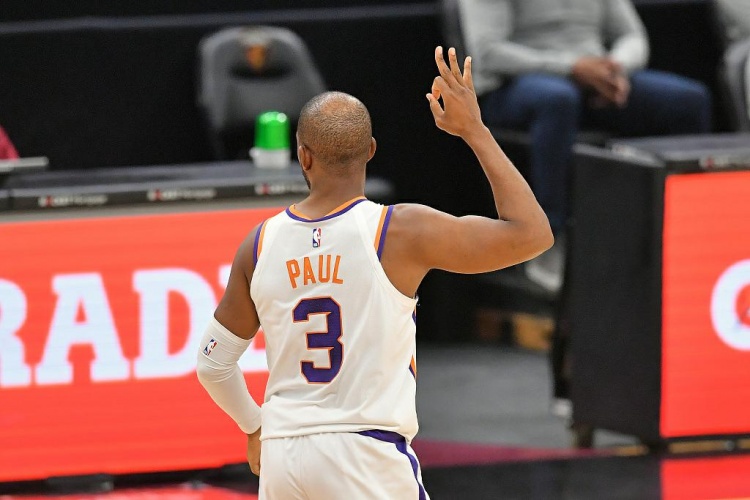 The ball must be held by the hands; the arms or body must not be used for holding it.
The ball must be held by the hands; the arms or body must not be used for holding it.
5. No shouldering, holding, pushing, tripping, or striking in any way the person of an opponent shall be allowed; the first infringement of the rule by any player shall count as a foul, the second shall disqualify him until the next goal is made, or if there was evident intent to injure the person, for the whole game, no substitute allowed.
6. A foul is striking at the ball with the fist, violation of rules 3, 4, and such as described in rule 5.
7. If either side makes three consecutive fouls it shall count a goal for the opponents (consecutive means without the opponents in the meantime making a foul.)
8. A goal shall be made when the ball is thrown or batted from the grounds into the basket and stays there, providing those defending the goal do not touch or disturb the goal. If the ball rests on the edges, and the opponent moves the basket, it shall count as a goal.
9. When the ball goes out of bounds it shall be thrown into the field of play by the person first touching it. In case of a dispute the umpire shall throw it straight into the field. The thrower-in is allowed five seconds; if he holds it longer it shall go to the opponent. If any side persists in delaying the game, the umpire shall call a foul on that team.
In case of a dispute the umpire shall throw it straight into the field. The thrower-in is allowed five seconds; if he holds it longer it shall go to the opponent. If any side persists in delaying the game, the umpire shall call a foul on that team.
10. The umpire shall be the judge of the men and shall note the fouls and notify the referee when three consecutive fouls have been made. He shall have the power to disqualify men according to rule 5.
11. The referee shall be the judge of the ball and shall decide when the ball is in play, in bounds, to which side it belongs, and shall keep the time. He shall decide when a goal has been made, and keep account of the goals, with any other duties that are usually performed by the referee.
12. The time shall be two 15-minute halves, with 5 minutes rest between.
13. The side making the most goals in that time shall be declared the winner. In case of a draw, the game may be by mutual agreement, be continued until another goal is made.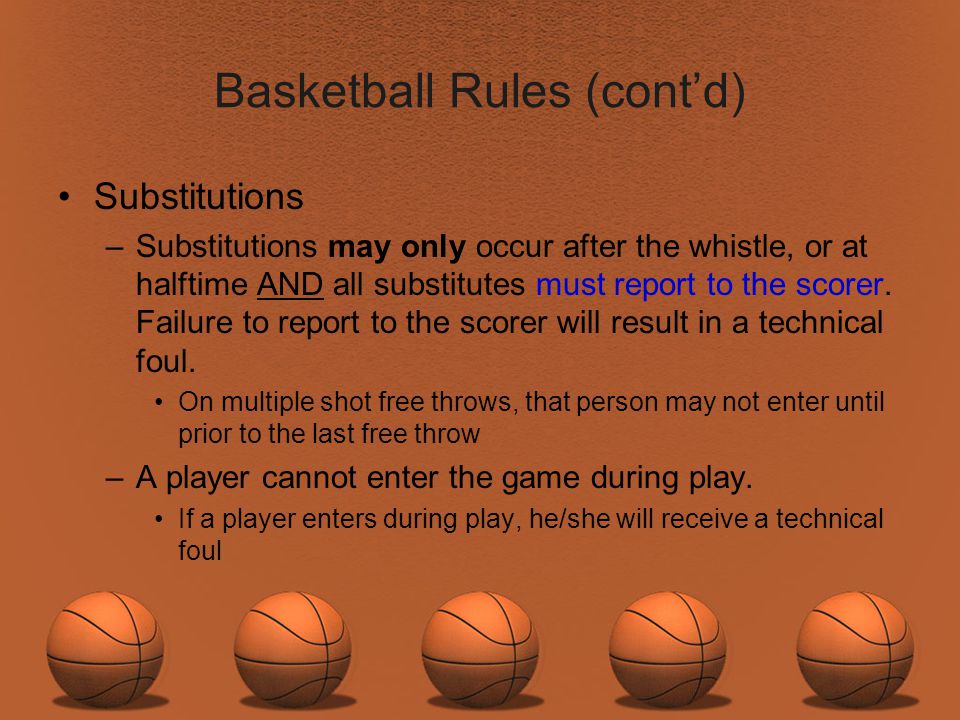
The history of the emergence and development of basketball in brief - Go-Sport
The history of the emergence of basketball
July 2, 2019
Student basketball in 1947
The history of basketball has 130 years. We will talk about who invented basketball and how, as well as about the periods and stages of its formation as a popular sport.
Who invented basketball?
James Naismith, who taught at the Youth Christian Association (YCA) American College in Springfield at the end of 19century. Naismith was looking for a new way to get college students involved in sports. In those days, students were only engaged in gymnastic exercises, which bored them very quickly. James Naismith has developed a new outdoor game to spice up boring gymnastics.
James Naismith, photo: www.art-pr.eu
The first basketball game took place on December 21, 1891. Naismith fixed two fruit baskets to the railing of the balconies, divided the students into two teams, and gave them a homemade ball.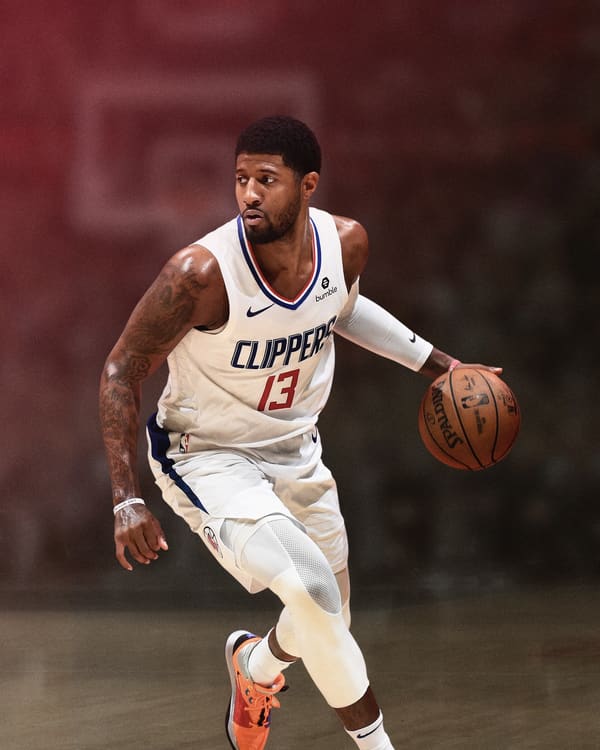 The goal of the game was the same as in modern basketball - to throw the ball into the basket. The team that threw the ball more times won.
The goal of the game was the same as in modern basketball - to throw the ball into the basket. The team that threw the ball more times won.
The game was radically different from modern basketball. Initially, there was no dribbling, and the players simply threw it to each other, moving a short distance across the court, on which there was practically no marking. To get the ball out of the basket, the players had to climb a ladder.
When did the first rules appear?
In 1892. Naismith and the students were satisfied with the game with practically no rules only at first. Over time, there was a need for a clear regulation of the matches, because sometimes even the fans on the balcony intervened in the course of the game - they caught the ball and threw it into the basket. At 1892, James Naismith compiled the first 13-point set of basketball rules. In the same year, physical education teacher Senda Berenson of a private women's college in Northampton, Massachusetts, adapted the rules for women's teams.
The new rules were revised and supplemented after the very first matches. The fans continued to "hooligan" and forced Naismith to come up with a shield that protected the basket. In 1893, the fruit basket went down in history, giving way to the usual mesh ring. A year later, the first official basketball rules were approved, which were valid throughout the United States.
Basketball court markings and dimensions
Basketball history
In the US, basketball was distributed to schools as part of physical education classes. Even before the beginning of the 20th century, basketball appeared in Canada, where college and university students also liked it. James Naismith promoted basketball in the United States, and the MXA college, where the first game took place, regulated the rules of the game for about the first ten years of basketball's existence.
Later, two organizations picked up the baton at the MXA College at once: the National Collegiate Athletic Association and the Amateur Athletic Union.![]() They were responsible for popularizing basketball in America. Already at 189In 8, supporters of the new sport tried to create the first official association of teams - the National Basketball League. However, this organization lasted only five years, and in the meantime basketball itself got out of North America.
They were responsible for popularizing basketball in America. Already at 189In 8, supporters of the new sport tried to create the first official association of teams - the National Basketball League. However, this organization lasted only five years, and in the meantime basketball itself got out of North America.
Milton Hershey Industrial School Basketball Team
When did basketball go international?
Closer to the twenties of the XX century. Basketball first appeared in Asian countries with which the United States had active trade and diplomatic relations. The first basketball teams outside the United States appeared in Japan, China and the Philippines. Then basketball appeared in South America and Europe.
A special role in the international popularization of basketball was played by the 1904 Summer Olympics in St. Louis, in which the Americans staged an exhibition tournament among teams from several nearby cities. Later, at the 1924 and 1928 Olympics, basketball was also introduced as a demonstration sport.![]()
In the 1920s, national basketball federations appeared in dozens of countries around the world. At the same time, the first official international meetings were held. For example, at 19In 1919, a basketball tournament was held between the army teams of the USA, France and Italy, and in 1923, the first international women's tournament in the history of basketball was held in France with the participation of teams from the USA, England and Italy.
The International Basketball Federation (FIBA) was founded in Geneva in 1932 and its first members were eight countries: Argentina, Greece, Italy, Latvia, Portugal, Romania, Sweden and Czechoslovakia. In 1935, the International Olympic Committee recognized basketball as an Olympic sport, and in 1935In 1936, the first ever set of Olympic medals in basketball was played in Berlin. The first Olympiad was won by the founders of basketball: the US team beat Canada in the final (19:8). During the Olympics in Berlin, the first FIBA International Congress took place, at which the unified international rules of basketball were adopted.![]()
Wilton Chamberlain (the first player to score from above in official games), photo: redbull.com
When did basketball appear in Russia?
The first basketball teams in Russia appeared at 1906 on the basis of the Mayak Sports Society in St. Petersburg. Before the October Revolution of 1917, basketball in Russia developed mainly in the capital of the Russian Empire, St. Petersburg.
Basketball players of the Sports Society "Mayak"
In the early twenties of the XX century, basketball was introduced into the curriculum of students of the Main Military School of Physical Education of Workers and the program of the Moscow Institute of Physical Culture. In 1923 the first championship of the USSR was played. Since 1934, the USSR basketball championship has been held annually.
In 1959, the USSR men's team took part in the World Championship for the first time and won all the matches, but was stripped of their gold medals for refusing to play against the Taiwanese team.![]() The USSR national team did not play with Taiwan for political reasons - because of its enmity with communist China. In 1976, the USSR women's team won the first women's basketball tournament at the Olympic Games.
The USSR national team did not play with Taiwan for political reasons - because of its enmity with communist China. In 1976, the USSR women's team won the first women's basketball tournament at the Olympic Games.
The history of professional basketball
At the beginning of the 20th century, the first professional teams began to form in the United States. There were even so-called "tour" teams that managed to play 200 matches throughout the country in a year. The most famous of them are the Original Celtics, the New York Renaissance and the Harlem Globtrotters. The Harlem Globtrotters exhibition team still exists today and acts as "goodwill ambassadors" from the United States around the world.
Washington Palace players
Professional basketball began in 1935 with the founding of the Midwestern Basketball Conference. Two years later, the organization grew into the National Basketball League (NBL), funded by the corporations General Electric, Firestone and Goodyear.![]() Initially, the NBL had 13 corporate teams, but later it grew to 38 clubs. The Basketball Association of America (BAA) formed in 1946 with 16 teams. In 1949, the NBL and the BAA merged to form the most popular basketball league in modern times, the National Basketball Association (NBA).
Initially, the NBL had 13 corporate teams, but later it grew to 38 clubs. The Basketball Association of America (BAA) formed in 1946 with 16 teams. In 1949, the NBL and the BAA merged to form the most popular basketball league in modern times, the National Basketball Association (NBA).
Basketball: history, rules, inventory, playground
Basketball (from English basket - basket, ball - ball) is an Olympic sport, a sports team game with a ball, the goal of which is to throw the ball into the opponent's basket more times than the opposing team does at the set time. Each team consists of 5 field players.
Contents
- The history of the emergence and development of basketball
- Basketball rules (briefly)
- Basketball field
- Basketball
- Basketball hoop and backboard dimensions
- Refereeing in basketball
- Basketball Federation
The history of the emergence and development of basketball
In 1891, in the United States of America, a young teacher, a native of Canada, Dr.![]() James Naismith, trying to "revive" gymnastics lessons, attached two fruit baskets to the railing of the balcony and suggested throwing soccer balls into it. The resulting game only remotely resembled modern basketball. There was no question of any management, the players threw the ball to each other and then tried to throw it into the basket. The team that scored the most goals won.
James Naismith, trying to "revive" gymnastics lessons, attached two fruit baskets to the railing of the balcony and suggested throwing soccer balls into it. The resulting game only remotely resembled modern basketball. There was no question of any management, the players threw the ball to each other and then tried to throw it into the basket. The team that scored the most goals won.
A year later, Naismith developed the first rules of basketball. The very first matches under these rules caused their first changes.
Gradually, basketball from the United States penetrated first to the East - Japan, China, the Philippines, and then to Europe and South America. After 10 years at the Olympic Games in St. Louis, the Americans organized a demonstration tour between the teams of several cities. The Basketball Association of America (BAA) was formed in 1946. The first match under her auspices took place on November 1 of the same year in Toronto between the Toronto Huskies and New York Knickerbockers. At 19In 1949, the association merged with the US National Basketball League to form the National Basketball Association (NBA). In 1967, the American Basketball Association was created, which for a long time tried to compete with the NBA, but merged with it 9 years later. Today, the NBA is one of the most influential and well-known professional basketball leagues in the world.
At 19In 1949, the association merged with the US National Basketball League to form the National Basketball Association (NBA). In 1967, the American Basketball Association was created, which for a long time tried to compete with the NBA, but merged with it 9 years later. Today, the NBA is one of the most influential and well-known professional basketball leagues in the world.
The International Amateur Basketball Federation was founded in 1932. The federation includes 8 countries: Argentina, Greece, Italy, Latvia, Portugal, Romania. Sweden, Czechoslovakia. Based on the name, it was assumed that the organization would only lead amateur basketball, however, at 1989, professional basketball players received admission to international competitions, and the word "amateur" was removed from the name.
The very first international match took place in 1904, and in 1936 basketball entered the program of the Summer Olympic Games.
Basketball rules (briefly)
The rules of the game of basketball changed several times until 2004, when the final version of the rules took shape, which is considered relevant to this day.
- Basketball is played by two teams. Usually a team consists of 12 people, 5 of which are field players, and the rest are considered substitutes.
- Basketball dribbling . Athletes in possession of the ball must move around the field, hitting the floor with it. Otherwise, "carrying the ball" will be counted, and this is a violation of the rules in basketball. Accidentally touching the ball with a body part other than the hand is not considered a foul, unlike purposeful play with the foot or fist.
- A basketball game consists of 4 periods or halves, but the time of each half (play time) varies depending on the basketball association. So, for example, in NBA a match consists of 4 halves of 12 minutes each, and in FIBA each such half lasts 10 minutes.
- Short breaks are provided between periods, and between the second and third periods, the break time is increased.
- The ball thrown into the basket can bring a different number of points to its team.
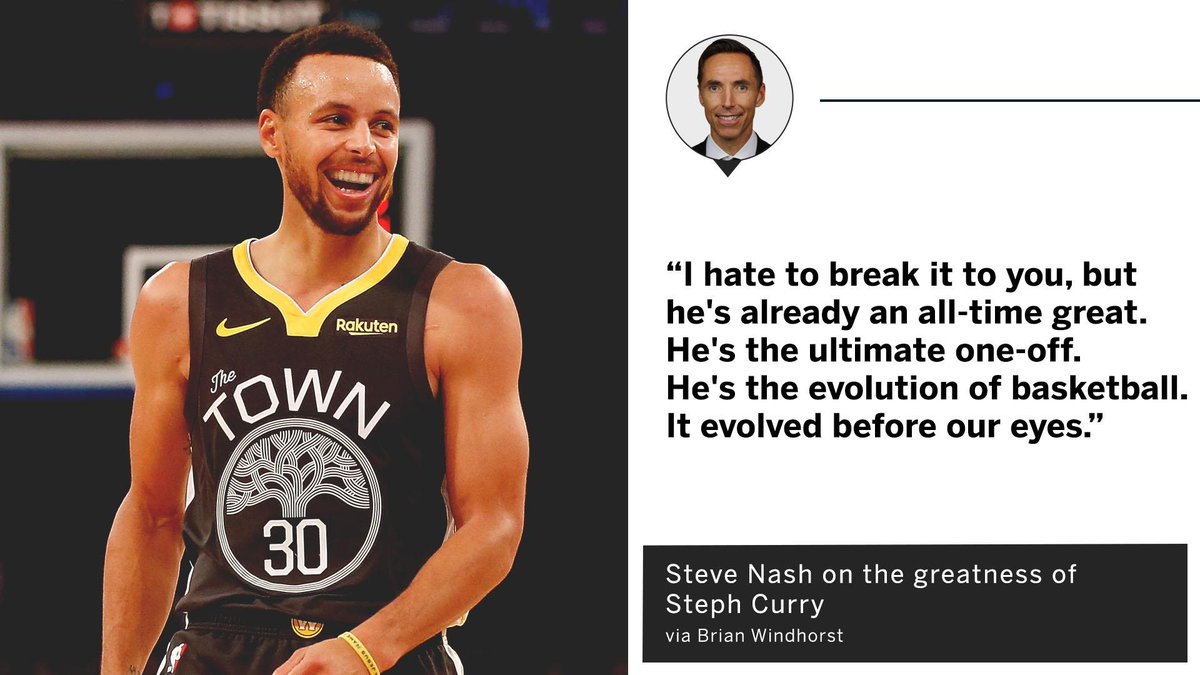 If the ball is scored during the free throw, the team earns 1 point. If the ball is thrown from an average or close distance (closer than the 3-point line), then the team is given 2 points. A team earns three points if the ball is scored from behind the three-point line.
If the ball is scored during the free throw, the team earns 1 point. If the ball is thrown from an average or close distance (closer than the 3-point line), then the team is given 2 points. A team earns three points if the ball is scored from behind the three-point line. - If in regular time both teams scored the same number of points, then a 5-minute overtime is assigned, if it ended in a draw, then the next one is assigned and so on until the winner is determined.
- 3 Second Rule - A rule that prohibits any player from the attacking team from being in the free throw area for more than three seconds.
- Basketball two step rule . The player is only allowed to take two steps with the ball, after which he must either shoot or pass.
Basketball field
The playing field for basketball has a rectangular shape and a hard surface. The surface of the site must not have any bends, cracks or any other deformations. The size of the basketball court must be 28 meters long and 15 meters wide (standard). The height of the ceiling must be at least 7 meters, and on professional sites, ceilings are raised to a height of 12 meters and above. The lighting on the field must be designed so as not to interfere with the movement of the players and must evenly cover the entire court.
The size of the basketball court must be 28 meters long and 15 meters wide (standard). The height of the ceiling must be at least 7 meters, and on professional sites, ceilings are raised to a height of 12 meters and above. The lighting on the field must be designed so as not to interfere with the movement of the players and must evenly cover the entire court.
Until the end of the 60s, tournaments could be organized outdoors. However, now basketball games are played only in closed areas.
Site marking
- limit lines. Pass along the entire perimeter of the site (2 short front lines and 2 long side lines).
- Central line. It is drawn from one side line to another and at the same time it is parallel to the front lines.
- The central zone is a circle (radius 1.80 m) and is located exactly in the center of the basketball field.
- Three-point lines are semi-circles with a radius of 6.75 m, drawn to the intersection with parallel (front) lines.
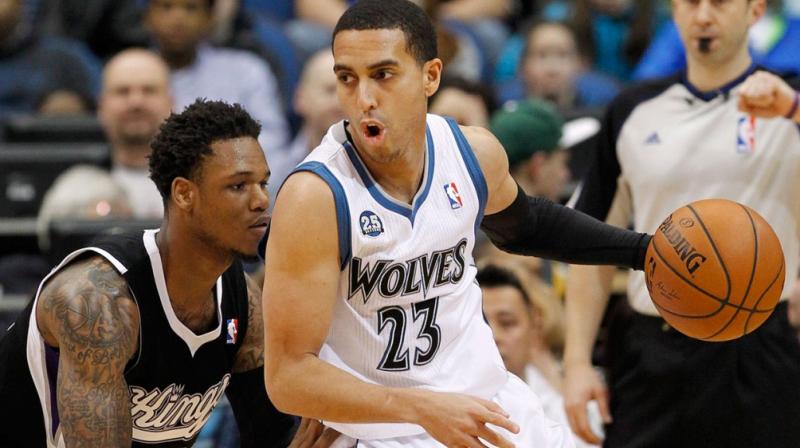
- Free throw lines. The free-throw line is drawn 3.60 m long parallel to each end line so that its far edge is located at a distance of 5.80 meters from the inside edge of the end line, and its middle is on an imaginary line connecting the midpoints of both end lines.
Basketball
The basketball is spherical, painted an approved shade of orange, and has a pattern of eight inlays and black stitching.
| Basketball size | Circumference, mm | Weight, g |
| Size 7 | 750-780 | 567-650 |
| Size 6 | 720-740 | 500-540 |
| Size 5 | 690-710 | 470-500 |
| Size 3 | 560-580 | 300-330 |
Basketball hoop and backboard dimensions
The height of the basketball hoop from the floor level is 3.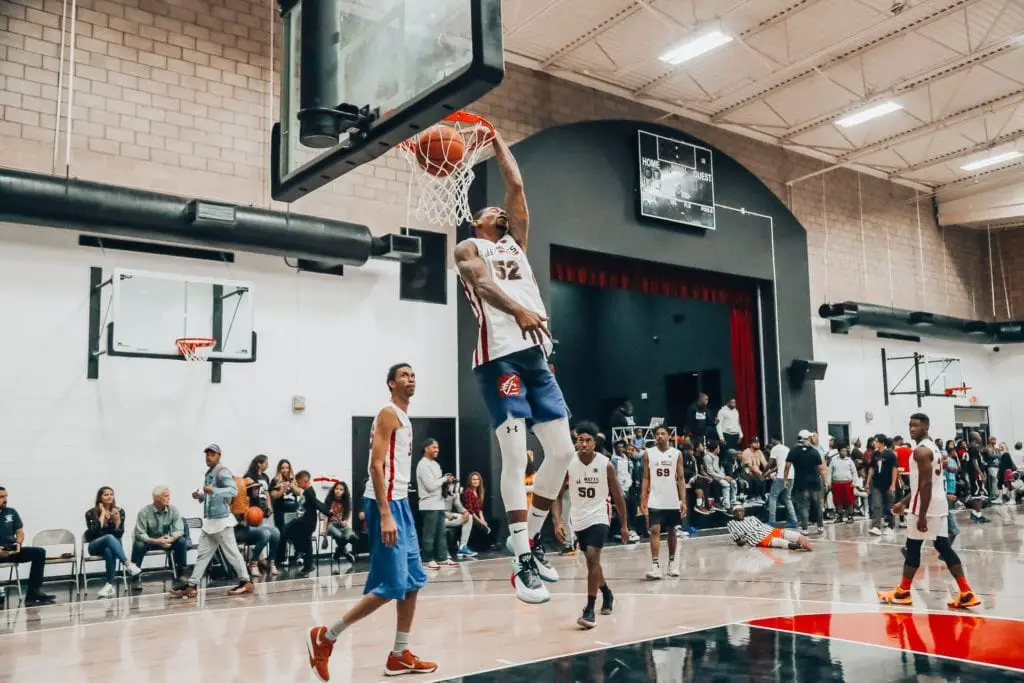 05 meters (standard). The diameter of the basketball hoop ranges from 45 cm to 45.7 cm. The ring itself must be painted bright orange. A special net with a length of 40-45 cm is attached to the ring. The basketball hoop is located at a distance of 15 cm from the backboard.
05 meters (standard). The diameter of the basketball hoop ranges from 45 cm to 45.7 cm. The ring itself must be painted bright orange. A special net with a length of 40-45 cm is attached to the ring. The basketball hoop is located at a distance of 15 cm from the backboard.
The shield to which the ring is attached also has a number of important parameters. Basketball backboard size: width - 1.8 m, height - 1.05 m. Modern basketball backboards are made of tempered glass.
Refereeing in basketball
At the basketball game there are:
- senior judge and judge;
- timekeeper;
- secretary;
- assistant secretary;
- operator 30 seconds.
Judge uniform:
- gray shirt;
- long black trousers;
- black basketball shoes.
Basketball Federation
- International Basketball Federation (FR. Fédération Internationale de Basketball, FIBA).
